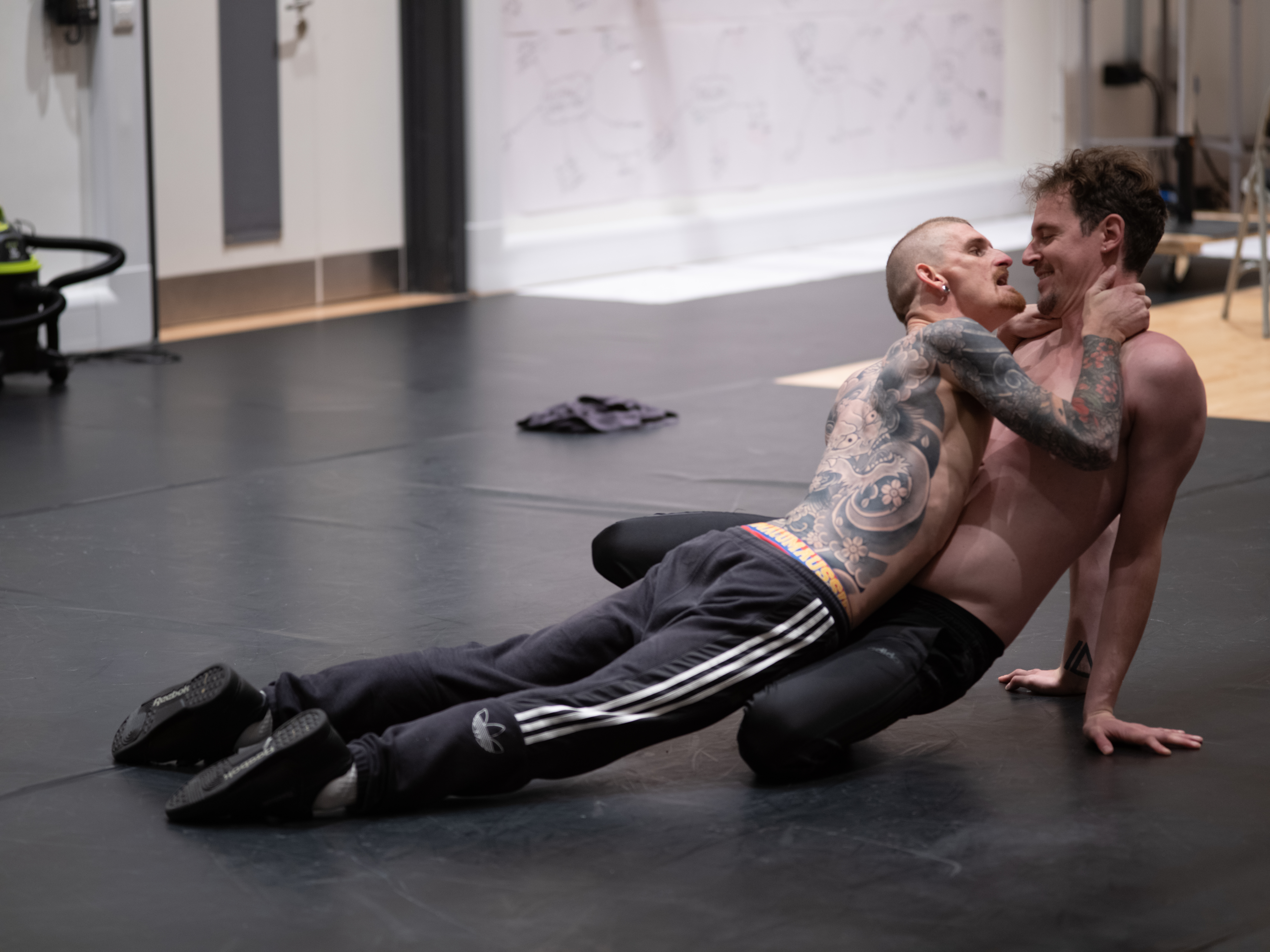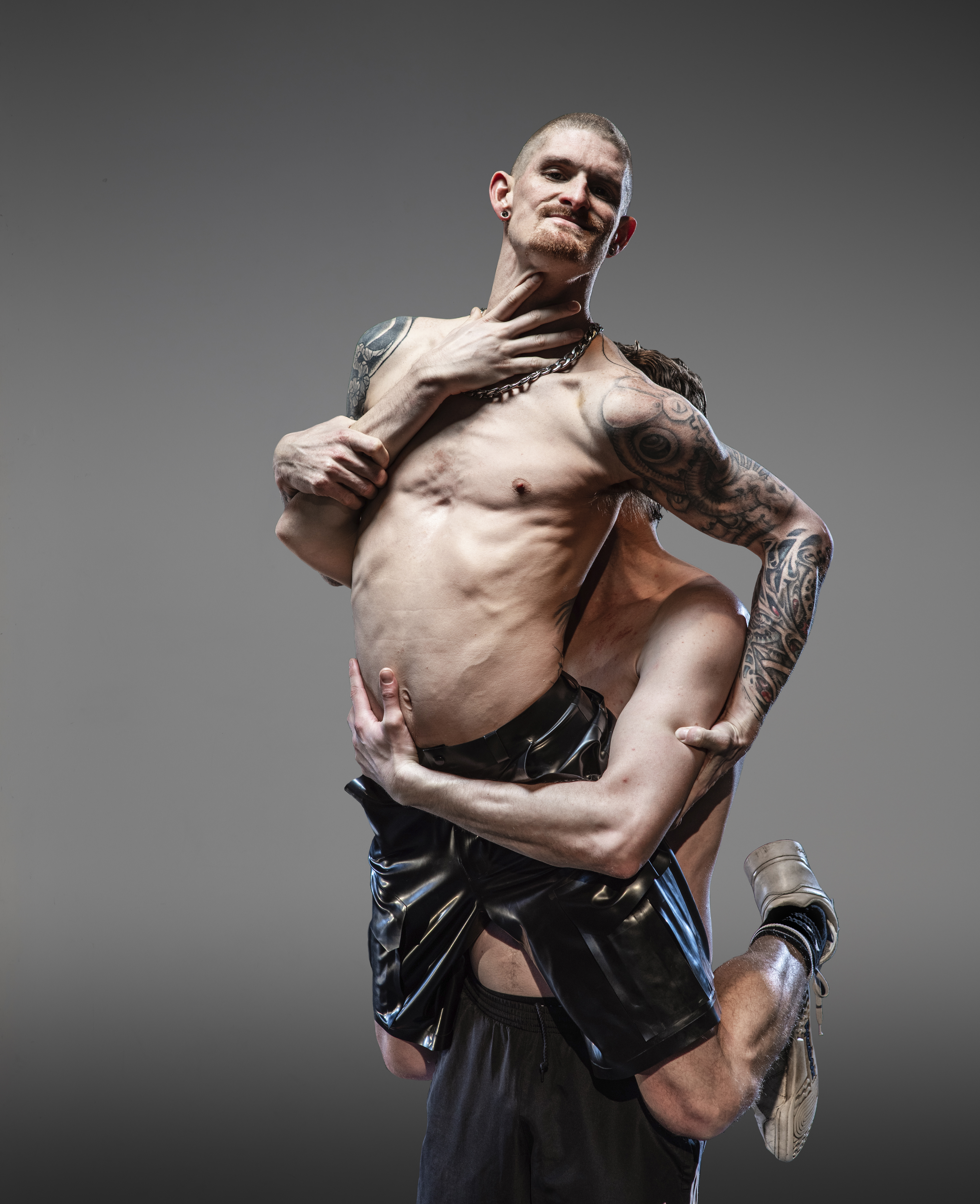Words by Katie Hagan.
Dan Daw and his team — also known as Dan Daw Creative Projects — first started researching the hotly-anticipated The Dan Daw Show in 2017. “Back then The Dan Daw Show was about my relationship to inspiration porn and being an ‘inspiration’ to other people,” Dan tells me as we speak one evening over Zoom ahead of the show’s performance at Sadler’s Wells. Inspiration porn is a term coined in 2012 by the late disability rights activist Stella Young. In her seminal TED Talk, Young delivers a piercing assertion on the objectification of disabled bodies and asks why nondisabled people feel the need to call every disabled person ‘inspirational’.
“Inspiration porn is when nondisabled people essentially ‘get off’ on the successes of disabled people,” Dan explains. “I’ve had experiences where nondisabled people come up to me and say I am an inspiration. And I’m like, okay but why? What do they mean by that? Is ‘inspirational’ a word nondisabled people use because they don’t have anything else to say to disabled performers?”
“A motivation for The Dan Daw Show was to gently unpick and unravel the motives behind inspiration and what that is,” continues Dan. “If I took the stairs, I’d be an inspiration but if I took the lift, that’s not inspiring? When we see the disabled body doing something a normative body can do, why do we make a big deal out of it? The annoying thing is that the moment a disabled body does something a disabled person does, it’s an inconvenience. This perception is definitely a bit fucked up and that’s why I thought, let’s talk about it!”
Whilst The Dan Daw Show has similarities to his past work including BEAST, which had its world premiere at the Swedish Performing Arts Biennale in 2015 and was an opportunity for him to explore his sexuality and be unafraid, overall the show is way punchier. “Although The Dan Daw Show started as a piece about inspiration porn, its essence transformed quickly. We realised it needed to be a piece about how I inspire myself. It’s how we arrived at what the work is now: an examination of my relationship between my cripness and kink, and the pride and shame that exist by being disabled and in the kink world,” Dan explains.
Dan informs me that he never thought he’d ever make a performance like this. “The show is super different my past work On One Condition,” he admits. “When I reflect on On One Condition the work feels deeply apologetic, earnest and a bit of a crowd-pleaser. I was overexplaining things and apologising for having a disability. I made that piece in 2015 and I guess that’s an indication of where I was at that point in my life. I am just not that person anymore and I am happy about that.”
So, what makes The Dan Daw Show so personal to Dan? “It has come from me realising that I don’t have to be apologetic anymore in the way I move through the world.”

Dan Daw grew up in a small outback city in south Australia. His desire to dance was unlocked when Restless Dance Theatre came to his town on tour. The company comprises artists with and without disability and opened up a whole world of possibility for Dan. “The first time I saw them perform I saw myself reflected onstage. I was like ok, that’s that then. I am going to perform.”
The making of The Dan Daw Show has been a powerful and empowering process for Dan and the artistic team: Mark Maughan (director), Thyrza Abrahams (assistant director), Sarah Blanc (movement director), Emma Bailey (designer), Nao Nagai (lighting designer), Guy Connelly (sound design), Brian Lobel (dramaturg), Dr Kate Marsh (assistant peer support) and Christopher Owen (performer).
But what can the audience expect? “This piece is all about unlocking my joy. I want the audience to celebrate that and to enjoy being back in the theatre. It’s an incredibly sexy and provocative work, and I want the atmosphere to speak and be lively. I want it to be fun.”
When I ask the question of whether it was difficult to open yourself up and dig deep into your soul, Dan goes into more detail about the piece’s profundity. “The Dan Daw Show is a series of realisations about myself. It is emotional and I cried a lot in the studio. Chris my fellow performer may do something to my body, and I may love it because it exposes a wound in me that I didn’t know was hidden.”
“It’s why the making process feels like therapy in a way,” Dan says. “It has helped me to own and celebrate my body after hating myself for so long. I couldn’t see what everyone else liked. But, the most important thing is that I see it now.”
Everyone sees what Dan Daw is like on Twitter; a fearless commentator who isn’t afraid to call-out the dance industry’s hypocrisies and malpractices. “That’s the person I ALWAYS want to be!” he laughs.
The Dan Daw Show’s central topic is ‘kink’, a kind of sexual activity that can include everything from role-playing to bondage. “People can expect reams of rubber in the show,” he grins.
In the making of the show Dan was interested in disability and fucking, but also around how he likes to be dominated on his own terms.
The UK really doesn’t talk about sex as openly as it should, which is surprising given near enough all of us do it. For Daw, sex is a metaphor for being able to get what he needs to feel good — something he is so frequently denied in the outside world.
“When I am outside it is difficult to control where I am,” he explains. “In nondisabled spaces I have to wear a lot of armour. Yet, when I am having sex that isn’t a thing. There is a line in the show where I say ‘I want to feel this free all the time.’ The freedom I feel when I am fucking is the sense of release and ownership over my body that I want to experience when I am catching the bus, or when I have to convince the waiter to give me a straw for my wine.”
Together, sex and disability are a double taboo. It’s unpicked in Netflix’s 2020 film Crip Camp which documents how a free-spirited summer camp was a catalyst for disability rights movements in the seventies. “One of the reasons I am making The Dan Daw Show is because there isn’t enough discourse around sex and disability,” Dan highlights. “Disabled bodies are desexualised when they really shouldn’t be. We love to have sex.”
As well as bringing sexuality to the fore, the show invites consideration on interdependence and care, as Dan higlights. “Another element of The Dan Daw Show is the interdependence in achieving queer joy. For a long time, I was incredibly proud and a little bit self-righteous. In time I realised that I was hurting myself because I wouldn’t let people help me.”
“Kink has taught me that we need each other and that it’s a good thing to rely on others to help you get what you need. Chris is a nondisabled person. Together we explore how I can use and be used by the nondisabled body, to let go and set myself free,” continues Dan.

Many of us in the industry know Dan Daw to be an unflinching figure who calls out any bullshit. It’s why I had to broach the scintillating topic of what he would change about the dance industry…
“For an art form that is all about bodies, dance neglects what our bodies need the most,” says Dan, characteristically lucidly and to the point. “We need to embed care in everything we do. Why are we asking dancers to work six days a week — are we expecting them to burn out and have injuries? We are people, not machines. I am seeing people I care about wilting within these capitalist models. We talk about the work/life balance, so why isn’t the industry implementing it? We can’t forget about our bodies and what we need,” he continues.
“The industry also needs to remember that people’s bodies are different. Some disabled bodies can’t work for four days. We are still adhering to this one-size-fits-all approach, yet this way of working is dead.”
Accessibility continues to be an area that some areas of dance industry can do better at. “I really want to get to a point where I don’t have to talk about it; where people stop blaming architecture for lack of accessibility. The conversation needs to move. I could dig out a presentation on accessibility from 12 years ago and it would still be relevant.”
It isn’t the role of disabled artists to educate nondisabled people on accessibility, just as it isn’t the responsibility of any historically excluded person to do the work their privileged counterpart should be doing. This is a mantra that Dan Daw certainly believes in.
Dan and I end our conversation on the topic of care and help. “What would my advice be to indy artists? Artists, particularly the ones that are historically excluded, need to know their power,” he stresses. “Never be apologetic and take up as much space as you can. No one should gaslight you or make you feel small when you stand so powerfully. Ultimately, accept nothing less than what you deserve.”
The Dan Daw Show runs at Sadler’s Wells 30 Sept-01 October. For more information on the tour, visit Dan Daw Creative Projects website. Header image: Hugo Glendinning.
